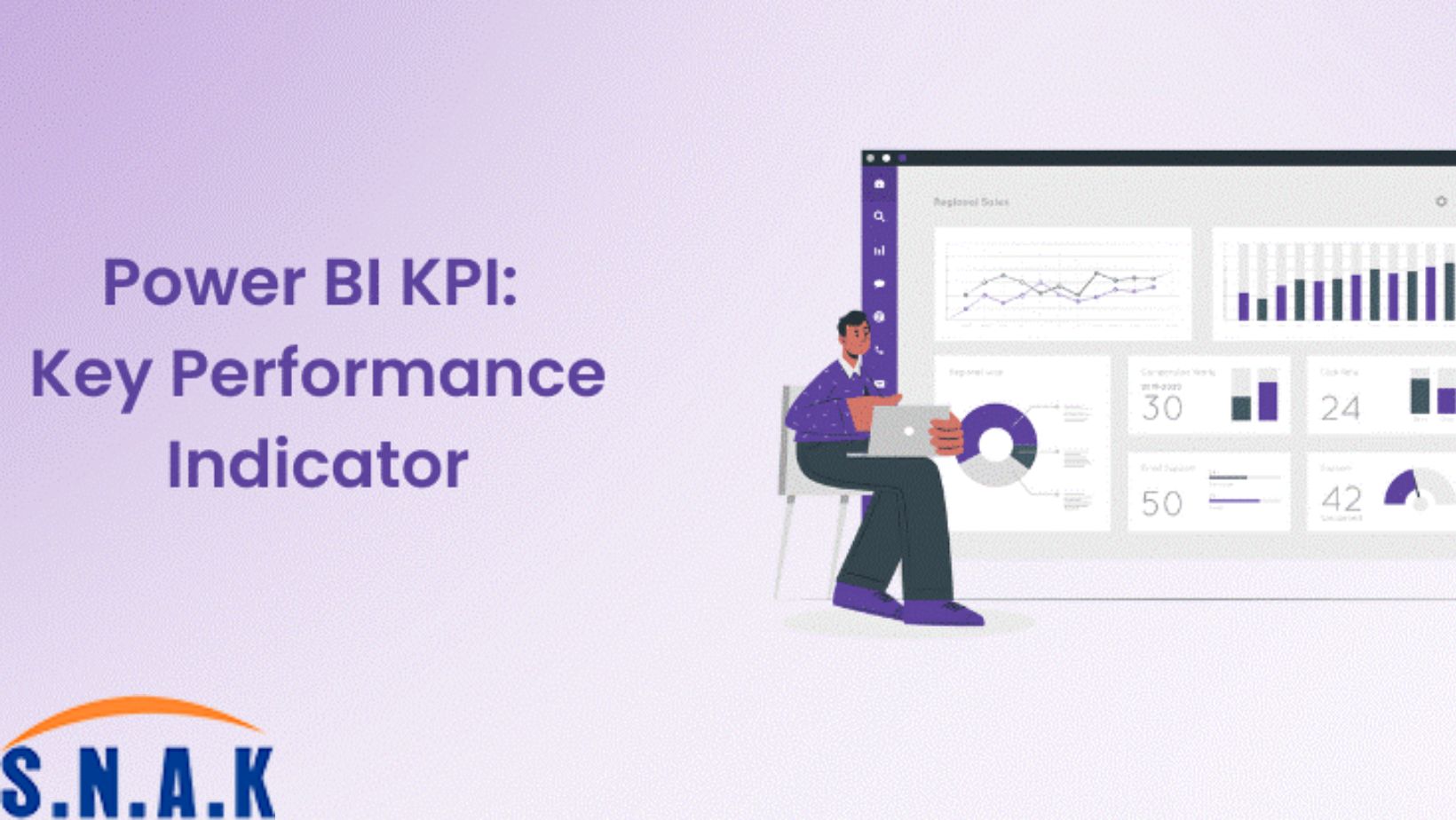July 4, 2023 | SNAK Consultancy
Share on :
Key Performance Indicators (KPIs) in Power BI to Unlocking Business Success

In today's fast-paced business environment, organizations are increasingly relying on data-driven insights to make informed decisions and drive growth. One powerful tool that has gained immense popularity in recent years is Power BI. With its user-friendly interface and robust analytics capabilities, Power BI empowers users to harness the power of data and transform it into actionable intelligence. In this blog, we will explore the significance of Key Performance Indicators (KPIs) in Power BI and how they can help businesses measure progress and achieve their strategic objectives.
What are Key Performance Indicators (KPIs)?
KPIs, are measurable values that indicate how effectively an organization is achieving its key objectives. KPIs serve as quantifiable targets that help businesses monitor their performance and make data-driven decisions. These indicators can vary across industries and organizations, depending on their specific goals and priorities. Examples of KPIs include revenue growth, customer satisfaction, sales conversion rate, employee productivity, and many more.
Importance of KPIs in Power BI:
Power BI offers a robust platform for creating interactive dashboards and visualizations that allow businesses to monitor and analyze their KPIs effectively. Here's why KPIs are essential in Power BI:
- Performance Monitoring: KPIs provide a clear snapshot of an organization's performance, enabling stakeholders to track progress towards their goals in real-time. Power BI allows you to visualize KPIs using various charts, graphs, and gauges, making it easier to monitor and compare performance across different time periods or departments.
- Data-driven Decision Making: By tracking KPIs in Power BI, businesses can gain valuable insights into their operations and identify areas that require attention or improvement. Armed with this information, decision-makers can make data-driven choices, allocate resources effectively, and develop strategies to drive growth and profitability.
- Transparency and Accountability: KPIs help foster a culture of transparency and accountability within an organization. By sharing KPI dashboards with employees, teams can align their efforts with the overarching goals of the business. Power BI's collaboration features enable users to share reports and dashboards, ensuring everyone has access to the same information and fostering a data-driven culture.
- Real-time Monitoring: Power BI allows you to connect to a wide range of data sources, including real-time data streams. This capability enables businesses to monitor KPIs in real-time, providing timely insights and facilitating proactive decision-making.
- Drill-down Analysis: Power BI's drill-down functionality allows users to explore KPIs at different levels of detail. By drilling down into the underlying data, you can identify trends, uncover root causes of performance issues, and take corrective actions.
Best Practices for Implementing KPIs in Power BI:
To ensure the successful implementation of KPIs in Power BI, consider the following best practices:
- Define Clear Objectives: Clearly define your organization's goals and objectives before selecting relevant KPIs. Ensure that your chosen KPIs align with your strategic priorities and provide meaningful insights.
- Choose the Right Visualizations: Select the most appropriate visualization types in Power BI to represent your KPIs effectively. Use charts, graphs, or scorecards that best convey the desired information to your audience.
- Establish Baselines and Targets: Set realistic baselines and targets for your KPIs to track progress over time. These benchmarks provide a point of reference and help evaluate performance against expectations.
- Regularly Review and Update: KPIs should be reviewed regularly to ensure their relevance and effectiveness. As business objectives evolve, it's essential to update and adapt your KPIs accordingly.
Questionnaire
Ques.1 How do you create a KPI indicator in power bi?
Ans. To create a KPI indicator in Power BI, you need to define the calculation method for your KPI, create a measure using DAX formulas to calculate the KPI value, select an appropriate visualization (such as a card or gauge) to represent the KPI, set up thresholds for different performance levels, apply filters and slicers for context, and publish or share the report. By following these steps, you can effectively create a KPI indicator in Power BI to track and monitor key performance metrics, enabling data-driven decision-making and insights for your business.
Ques.2 What is key performance indicators in power bi?
Ans. Key Performance Indicators (KPIs) in Power BI are measurable values used to evaluate the performance of an organization or specific aspects of its operations. Power BI provides a platform to visualize and track KPIs, allowing businesses to monitor progress, make data-driven decisions, and achieve their strategic objectives.
Ques.3 What is the most important key performance indicator KPI for business?
Ans. The most important Key Performance Indicator (KPI) for a business depends on its specific goals and industry. However, revenue growth is often considered a crucial KPI as it directly impacts a company's financial health and sustainability. Other important KPIs can include customer satisfaction, profitability, customer acquisition cost, and employee productivity.
Conclusion
KPIs play a vital role in enabling businesses to measure performance and achieve their strategic goals. Power BI's robust analytics capabilities empower organizations to monitor and analyze their KPIs effectively, facilitating data-driven decision-making. By implementing KPIs in Power BI and following best practices, businesses can unlock actionable insights, drive growth, and stay ahead in today's competitive landscape.